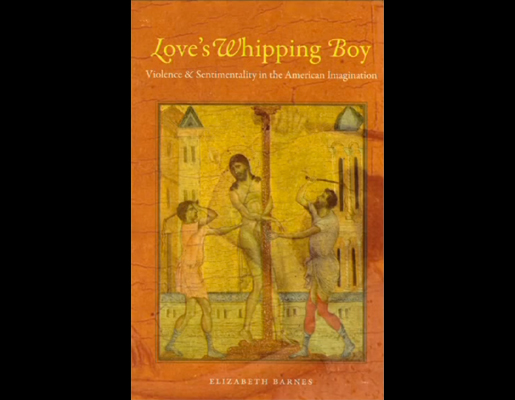Love’s Whipping Boy probes the twin American phenomena of violence and sentimentality
How can America be so violent, and yet so sentimental at the same time?
It’s a question that has intrigued English Professor Elizabeth Barnes for almost a decade and forms the basis for her upper-level seminar, Christianity and 19th-Century American Literature. It’s also the subject of her new book Love’s Whipping Boy: Violence and Sentimentality in the American Imagination.
“I wondered how nineteenth-century Americans understood the role of violence in a democratic, sympathetic nation,” says Barnes. “During this time, there were lots of acts of domestic violence—slavery, Indian removal, naval flogging, corporal punishment—that contradict an antebellum ethos of democratic, Christian love.” Barnes turned to period literature to trace American understanding of violence and sentimentality. She discovered an interesting literary pattern of privileged people engaging in dynamic acts of violence, then identifying with the victim, and ultimately seeing themselves as the victim—it’s something she calls the “whipping boy effect.”
Whipping boy refers to a practice of discipline first recorded in the sixteenth century. Because of his royal blood, Prince Edward, son of Henry VIII, could not be whipped for bad behavior. So a boy of similar age was whipped as a substitute. By watching another be beaten for his mistakes, he was expected to feel shame and guilt, making him more mindful of how his actions affected others.
Barnes has traced this dynamic pattern through nineteenth-century American literature, with examples ranging from Louisa May Alcott’s Little Men to the tale of John Brown. In both stories, the characters who are disciplining the children hand the whip to the child and ask the child to beat them instead.“What we find are narratives that ostensibly reconcile the use of force by re-writing violent acts as potentially redemptive moments,” says Barnes. “Christ was the ultimate whipping boy. He was the first to suffer for the guilt of others. I see Christianity as providing a framework through which U.S. authors and historical figures work out the anxieties and guilt of patriarchal authority by re-imagining powerful fathers as powerless, suffering sons.
In the classroom, Barnes’ students have been very interested in talking about ideas related to Christianity. Her seminar grew directly out of her work on the book, and her students became a valuable resource in developing her ideas.
“When you are writing a book you tend to be alone with your own ideas,
and there is no one to challenge your thoughts,” says Barnes. “It’s only
when you bring those ideas into the classroom that you discover new
things and see even more ways to understand the implications of your
research. The students and I are learning at the same time.” ![]()
















